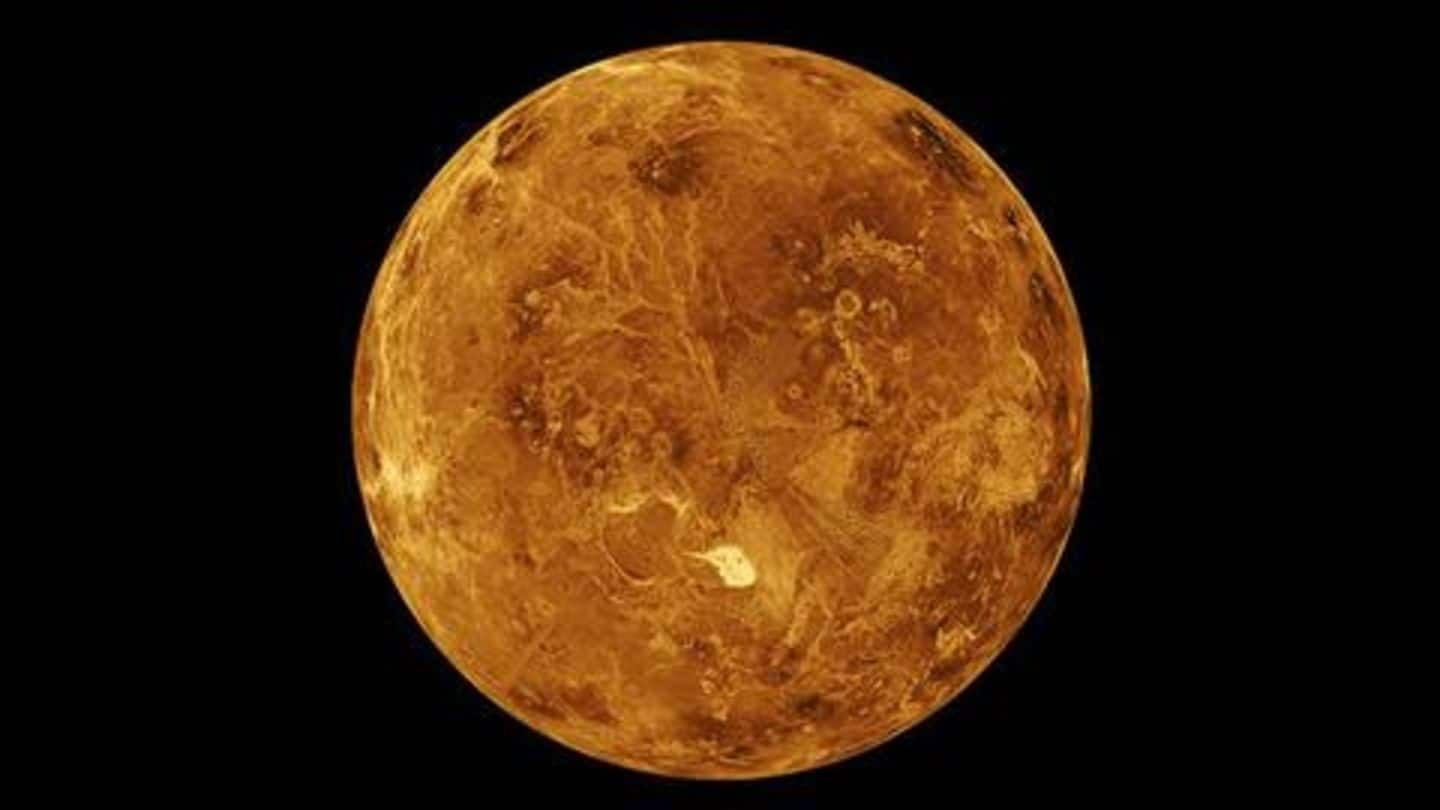
New study finds proof that Venus could once support life
What's the story
Ever since the NASA's Pioneer Venus project suggested back in the 1980s that the planet might have had an ocean, scientists have been struggling to understand what exactly happened that turned Venus into the inhospitable hellscape it is today. Another question that arises with the Pioneer's findings is whether Venus was ever a habitable planet. A recent study now hopes to answer that question.
Study
Study was presented by two NASA GISS researchers
At the European Planetary Science Congress - Division for Planetary Sciences (EPSC-DPS) Joint Meeting 2019 in Geneva on September 20, NASA Goddard Institute for Space Science (GISS) researchers Michael J. Way and Anthony D. Del Genio presented their study to establish possible habitability of ancient Venus. Incidentally, Way had also authored a 2016 study on Venus's climate to see if it could've been habitable.
Methodology
Way and Del Genio ran four topographical simulations
The scientists ran four topographical simulations using a 3D General Circulation Model (GCM). Two simulations included Venus's current topography with 310m and 10m deep oceans. A third simulation included Earth's current topography with a 310m deep ocean and the fourth imagined an ocean world. The four simulations were run at three time periods- 4.2 billion years ago, 0.715 billion years ago and present day.
Findings
Here's what the study found
The study hypothesized, "Venus may have had a stable climate for billions of years with a carbonate-silicate cycle similar to that of Earth." So, why isn't Venus's present temperature around 20-40°C instead of the "CO2-dominated hothouse" today? The study explains, "It is possible that the near-global resurfacing we see today that took place approximately 750Mya (million years ago) is responsible for its present-day climate."
Venus climate
Why is Venus such a hot mess at the present?
For the uninitiated, present-day Venus has a surface temperature of 500°C and atmospheric pressure 92 times that of Earth. The blanket of sulfuric acid clouds doesn't make the planet any more survivable. It is believed that a global volcanic resurfacing event on Venus released trapped carbon dioxide which triggered a runaway greenhouse effect- where accumulating greenhouse gases result in a planet's water boiling off.
Information
To understand 'global-resurfacing', here's what happened on Earth ages ago
For reference, the volcanic phenomenon that created the Siberian Traps 500 million years ago shot enough molten lava and volcanic ash up from the Earth's core that the event wiped out 90% of all life on Earth. Now, imagine a global volcanic resurfacing event.
Quote
There's a real possibility that Venus could've been habitable: Way
Notably, Way said, "Our models show that there's a possibility that Venus could've been habitable and radically different from the Venus we see today." Way also noted that this widens scientists' perception of a habitable zone. He said, "This opens up all kinds of implications for exoplanets found in what's called the 'Venus Zone', which may, in fact, host liquid water and temperate climates."
What next
However, we need a deeper understanding of Venus still
However, owing to Venus's inhospitable climate, there is just not enough evidence to understand the planet. Way said, "We need more missions to study Venus and get a more detailed understanding of its history and evolution." Fortunately, a series of Venus missions are lined up, with the Indian Space Research Organization (ISRO) launching the first in 2023, followed by US, Europe and US-Russia missions.